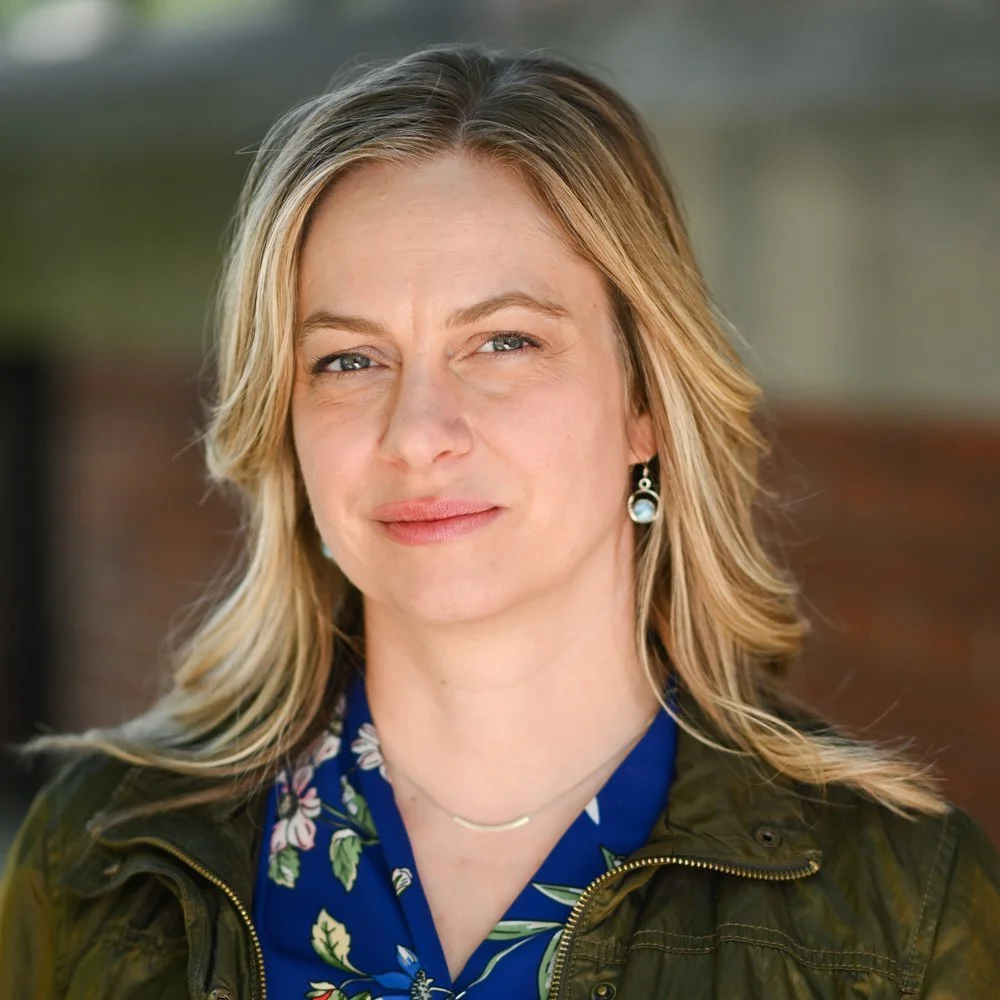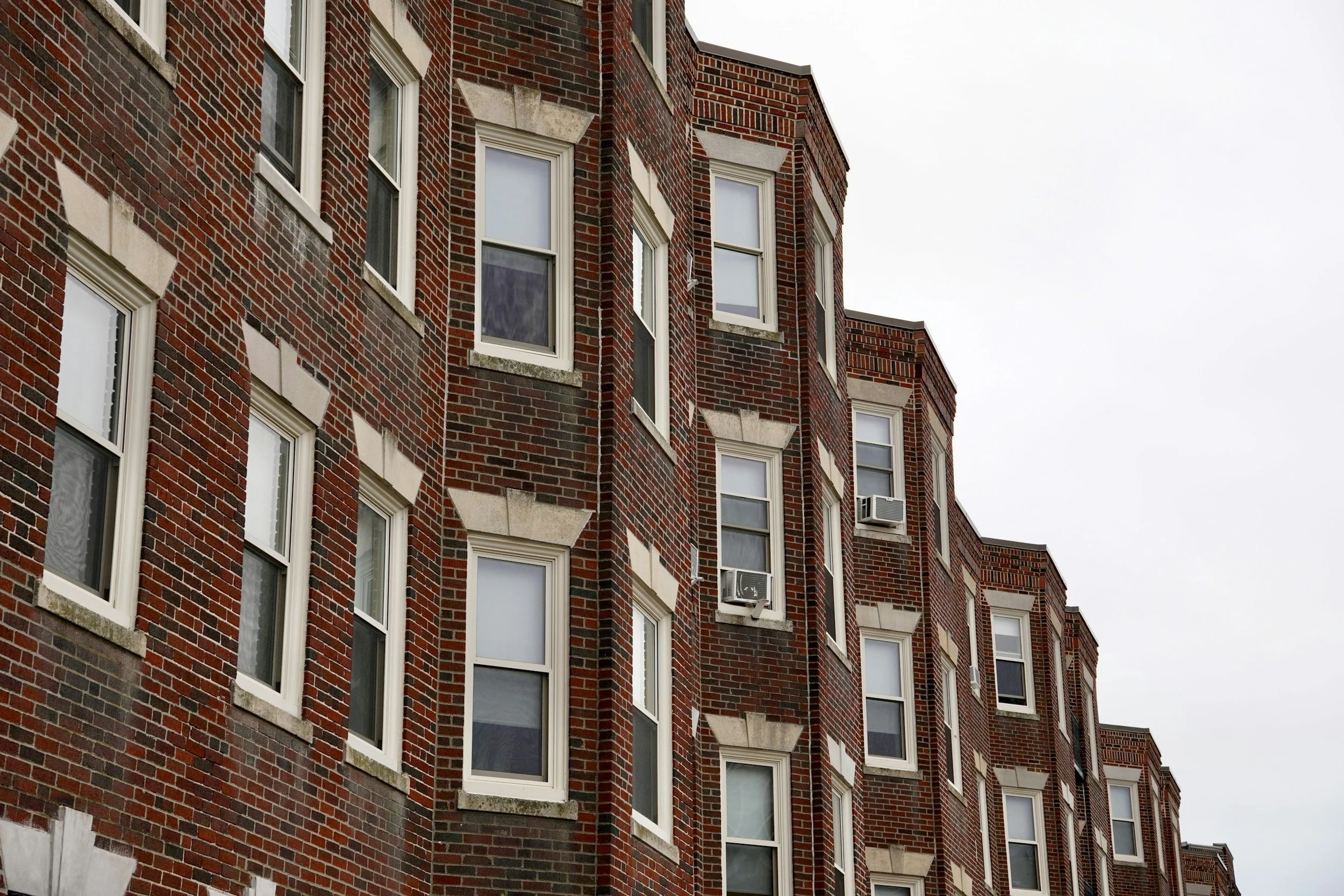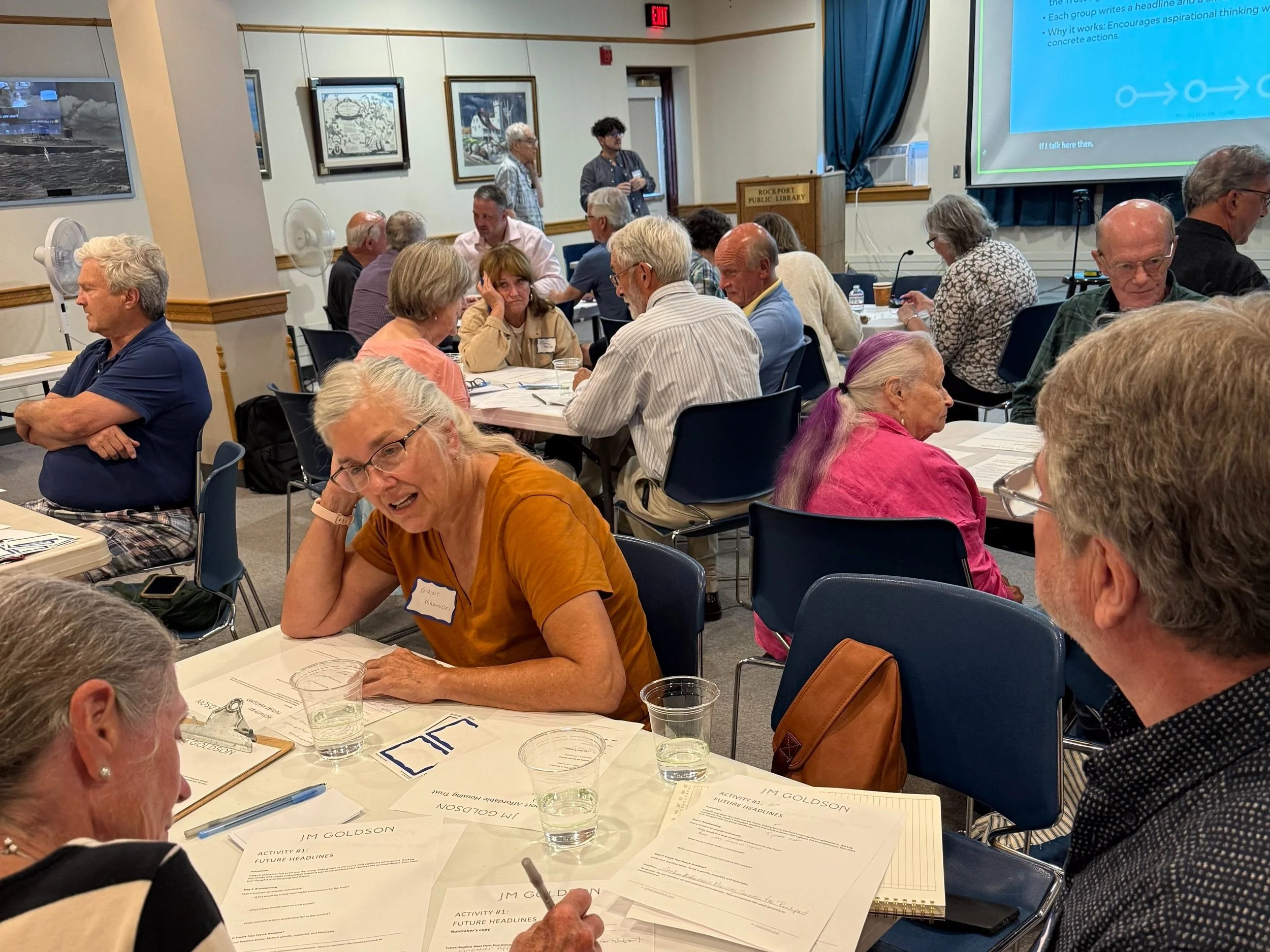The Impact You Can’t Always See: Why I’m Writing a Book About Planning, Purpose, and Possibility
WRITTEN BY JENN GOLDSON, AICP
I didn’t expect an email to send me into an existential spiral.
But after more than 30 years in community planning working in towns and cities across New England, helping shape housing policy, preservation strategies, and long-range plans, I submitted my application for FAICP (Fellow of the American Institute of Certified Planners) and waited.
Six months later, the response arrived.
“Your application was not selected this cycle…”
Just like that. After all those years, all those projects, all those relationships, I was told it didn’t add up.
And suddenly, I couldn’t stop asking myself: What have I been doing with my life?
The Work Behind the Work
Planning is a field that often flies under the radar. If we do our jobs well, most people won’t even notice. That’s kind of the point.
We’re behind the scenes. We’re facilitating meetings, guiding conversations, advising local officials, writing policies, explaining zoning, teaching in moments so informal they barely register. Most of our work happens in the early stages of change. We lay the groundwork. We prepare the soil, so to speak. We help communities imagine what’s possible and move toward it. We do it incrementally, imperfectly, and often without fanfare.
That’s why the FAICP rejection stung. Not because I needed the letters after my name, but because it made me question whether any of that invisible work mattered.
The truth is: it’s hard to measure the impact of soft skills. Things like listening, coaching, conflict resolution, translation, trust-building. But these are the exact tools that make planning work, especially when we’re talking about difficult, emotional issues like housing, density, and community change.
The Stories We Tell Ourselves
It hit a nerve I’ve been carrying most of my life.
Maybe this is #TMI but, my father left our family when I was a toddler. He started a new family and stayed. I spent years wondering: Was I not important enough to stay for?
That unspoken question became a belief: I’m not enough. And I’ve spent most of my life working to prove otherwise.
Growing up working class in a wealthy town, I knew I’d have to work twice as hard to get half as far. So I did. I was persistent. Scrappy. At 17, I walked into a local architect’s office after school (no job posting, no connection) and asked for a job. Any job. I filed papers, ran to the sub shop for lunch orders, learned by watching. That’s how I started.
Eventually, I built my own firm. I mentored junior planners. I created internal trainings. I worked in hundreds of communities. I wrote a guidebook for the Massachusetts Housing Partnership in 2008 that’s still being updated and used to this day by towns across the state. I helped launch affordable housing trusts, bridge community divides, facilitate hard conversations.
I was proud of the work.
And still, that email: “Not selected.”
The Impact You Can’t Always See
For a few weeks, that rejection had me spiraling.
I went back through old projects, lists of clients, files from years ago. I tried to tally it up. What has it all been for? Was it useful? Was it enough?
The problem wasn’t that I hadn’t done meaningful work. It was that I hadn’t always stopped to name the meaning.
I realized I wasn’t alone in this. So many of the planners I’ve worked with, especially women, especially those from working-class or underrepresented backgrounds, carry the same question.
We are doers, not self-promoters.
We don’t always know how to talk about impact. But that doesn’t mean we haven’t had one.
The very skills that often go unnoticed (empathy, facilitation, collaboration) are the ones that move the needle. They are essential to building inclusive, equitable communities. And yet they rarely show up in metrics or award applications.
This realization lit a spark in me. Maybe I couldn’t prove my worth in a nomination packet. But maybe I could tell the story. Maybe I could share what I’ve learned in a different way.
That’s when I decided to write a book.
Why I’m Writing This Book
The book I’m writing isn’t a traditional planning textbook. And it’s not a memoir either, though there’s plenty of personal reflection.
It’s a conversation. A call. A collection of hard-earned lessons and field-tested strategies. It’s about why embracing density is essential to solving the housing crisis and why doing so requires more than just good design and zoning reform. It requires trust. It requires people skills. It requires heart.
Because let’s be honest: density is still a loaded word. Even among planners, we sometimes avoid saying it out loud. But we can’t afford to be timid. If we want to make real progress on housing, equity, and climate, we have to face the discomfort, engage with resistance, and move forward anyway with compassion and clarity.
I believe we can do that. I’ve seen it happen in small towns and rural villages as well as in cities and suburbs. I’ve seen communities shift when people feel heard. I’ve seen housing get built when the process is grounded in real relationships. And I’ve seen planners grow when they’re given the tools and encouragement to lead with both head and heart.
That’s what I want this book to offer.
Who It’s For
I’m writing this book for the planners who wonder if they’re making a difference. For the local officials and volunteers who show up at public meetings month after month, trying to do what’s right for their communities. For the next generation of planners, especially those from underrepresented and under-resourced backgrounds, who need to know they belong here.
We need more good planners. We need younger planners. We need more planners with lived experience and diverse perspectives. We need planners who know that soft skills are real skills. We need planners with heart.
The Book Isn’t Finished (But the Work Is Ongoing)
I’m still in the thick of writing. The manuscript is taking shape, but the process has already given me something unexpected: clarity. Writing this book has helped me understand my own story more fully and has deepened my belief in the value of this work.
Because planning, at its core, is about people. It’s about place. It’s about possibility.
The change we create may be slow. It may be hard to measure. But it is real.
As James Baldwin said, “Not everything that is faced can be changed, but nothing can be changed until it is faced.” Soft skills help us face the hard stuff.
And as Shirley Chisholm said, “We must reject not only the stereotypes that others hold of us but also the stereotypes that we hold of ourselves.”
This book is my way of rejecting the story that I am not enough. It’s also an invitation for you to do the same.
A Call to Action
If you’re reading this and you’re a planner: I see you. I know how invisible this work can feel. I know how hard it is to carry the weight of community change, especially when the results take years to show. Your work matters. Even when no one is handing out medals.
If you’re considering planning as a career: I hope you’ll lean in. We need you. Your voice, your perspective, your energy.
If you’ve ever felt like you weren’t enough: You are.
And I know doing this work can feel especially heavy right now, in a national climate where division and authoritarianism seem to grow louder by the day. That makes local, community-centered planning more important than ever.
I hope this book, when it’s finished, will be both practical and inspirational. I hope it touches your heart as well as your mind. And I hope it helps you become the kind of planner (citizen or professional) who listens deeply, shows up fully, and helps build communities that are truly inclusive and welcoming.
Let this be your call to action. :-)
Get in touch with Jenn
I’D LOVE TO CONTINUE THE CONVERSATION.
LET’S STAY CONNECTED:





